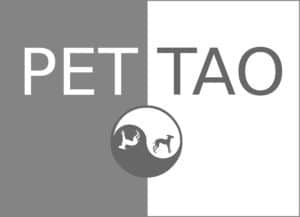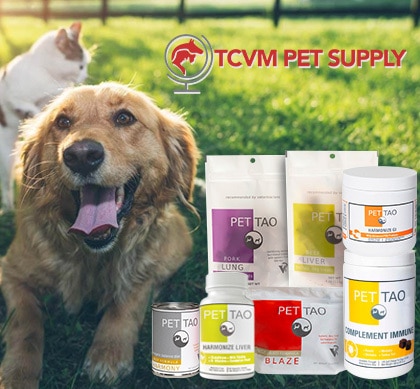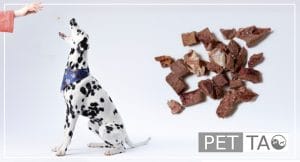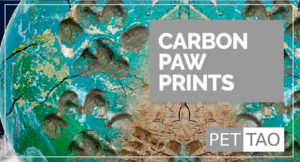Watching your beloved dog struggle with Cushing’s disease can be heart-wrenching. In both Traditional Chinese Veterinary Medicine (TCVM) and Western medicine, the condition is viewed as a progressive imbalance that gradually depletes vitality. As the disease advances, you may wonder about the symptoms of a dog nearing the end of life with Cushing’s disease. Becoming aware of these signs early allows you to respond with compassion, provide comfort, and make informed decisions.
From a TCVM perspective, Cushing’s disease reflects a depletion of Yin and Essence, accompanied by excess Yang, resulting in restlessness, weakness, and a loss of bodily harmony. Recognizing these shifts helps you understand not only the physical changes but also the energetic imbalance behind them.
By knowing the key symptoms and how they manifest, you can support your dog naturally and gently—creating a more peaceful transition while honoring your pet’s journey.
The Three Stages of Cushing’s Disease
Below are the three stages of Cushing’s disease in dogs, along with descriptions for each stage.
Early-Stage Cushing’s Disease
In the early stage of Cushing’s disease, symptoms are often mild and may go unnoticed or be mistaken for normal aging. Common signs include:
- Increased thirst and urination: Dogs may drink more water than usual and need to urinate more frequently.
- Increased appetite: A noticeable increase in hunger and food consumption is common.
- Mild hair loss: Thinning hair, especially on the flanks and along the back, might start to appear.
- Lethargy: Dogs may show slight decreases in energy and enthusiasm for activities they previously enjoyed.
Mid-Stage Cushing’s Disease
As Cushing’s disease progresses to the mid-stage, symptoms become more pronounced and can significantly affect the dog’s quality of life. These symptoms include:
- Noticeable hair loss and skin changes: There is more extensive hair loss, skin thinning, and blackheads or darkened skin development.
- Muscle weakness: Visible muscle wasting and weakness, making it difficult for the dog to jump or climb stairs.
- Pot-bellied appearance: Abdominal distension due to muscle weakness and redistribution of fat.
- Panting: Increased panting, even when the dog is at rest, can be observed.
- Infections: Dogs may develop recurrent skin and urinary tract infections due to a weakened immune system.
Late-Stage Cushing’s Disease
In the late stage, the symptoms of Cushing’s disease become severe and debilitating, often indicating a decline in the dog’s overall health.
Symptoms include:
- Extreme weakness and lethargy: Dogs may become extremely tired and reluctant to move.
- Loss of appetite: A significant decrease in appetite, leading to weight loss and muscle atrophy.
- Severe skin problems: Persistent skin infections, ulcerations, and delayed wound healing.
- Neurological symptoms: Signs such as disorientation, seizures, or collapse may occur.
- Difficulty breathing: Labored breathing or signs of respiratory distress can be present.
- Increased risk of complications: Secondary health issues like diabetes, hypertension, and kidney failure can arise, exacerbating the dog’s overall condition.
Understanding the stages of Cushing’s disease helps you monitor your dog’s health more effectively and seek the right veterinary care. With this awareness, you can take steps to manage the disease and maintain your dog’s quality of life for as long as possible.
Sometimes, Cushing’s is caught early, and the dog is strong enough to respond well to medications, supplements, or herbal support. From a Traditional Chinese Veterinary Medicine (TCVM) perspective, these treatments work by restoring balance within the body—nourishing depleted Yin, supporting Essence, and calming excess Yang. This approach allows the body to regain harmony, improve vitality, and resist further imbalance.
As the disease progresses, late-stage symptoms become more pronounced. The speed of progression varies. Some dogs move through the stages gradually, while others decline more quickly, especially if they are already frail or have complicating conditions such as diabetes, kidney disease, heart problems, or chronic infections.
Dogs in this stage often exhibit signs of weariness, a poor appetite, muscle wasting, weakness in the hind legs, and increased susceptibility to secondary infections. From a TCVM perspective, these symptoms indicate a profound depletion of Qi and Yin, with Heat consuming the body’s resources and leaving the Spirit unsettled. The result can be restlessness, excessive panting, or agitation, alternating with fatigue and lethargy.
In many cases, dogs with complicating conditions may have a shorter lifespan after diagnosis—sometimes only weeks to months—while others may live longer with careful management. By recognizing these variations, you can make thoughtful treatment decisions and provide care that prioritizes both comfort and dignity. Supporting your dog’s journey with a blend of modern veterinary medicine and natural therapies creates a more peaceful and balanced experience during this challenging time.
Symptoms of a Dog Dying of Cushing’s Disease
When a beloved dog is in late-stage Cushing’s disease, it can be challenging to witness.
Below are some signs to look out for that may indicate your dog is in late-stage Cushing’s disease:
- Extreme weakness or lethargy: Your dog may appear increasingly tired and struggle to move around as usual.
- Loss of appetite: If your dog starts to lose interest in food and experiences significant weight loss, it could be a sign that they are nearing the end stages of Cushing’s disease.
- Increased thirst and urination: While excessive drinking and urination are common symptoms of Cushing’s disease, you may notice these symptoms become more pronounced in the late stages.
- Difficulty breathing: Labored breathing or signs of struggling to catch their breath may indicate your dog’s condition is worsening.
- Neurological signs: In severe cases, dogs may exhibit neurological symptoms, including seizures, disorientation, or collapse.
- Worsening of existing symptoms: Monitor any symptoms of Cushing’s disease, such as hair loss, thinning skin, or a pot-bellied appearance, as they may worsen as the condition progresses.
Remember, the signs described above can also point to other serious health conditions, which is why consulting with your veterinarian is essential for a proper diagnosis and guidance. A thorough evaluation helps rule out other illnesses and ensures your dog receives the most appropriate care.
When Cushing’s disease reaches an advanced stage, end-of-life decisions become a vital part of the conversation. Together with your veterinarian, you can create a plan that focuses on your dog’s comfort, dignity, and overall well-being. From a TCVM perspective, this stage is about restoring peace by easing discomfort, calming the Spirit (Shen), and supporting the body’s remaining energy (Qi). Herbal therapies, acupuncture, or gentle dietary adjustments may help reduce agitation, ease pain, and provide balance even in the final days.
Approaching these decisions with compassion allows you to honor your dog’s journey while ensuring they feel loved, supported, and cared for as naturally and peacefully as possible.
Assessing Your Dog’s Quality of Life
Assessing the quality of life for dogs with Cushing’s disease is a crucial aspect of decision-making, but it’s not always straightforward. However, several quality-of-life scales designed specifically for dogs can be valuable tools. Here is a good example from Lap of Love.
Also, the following Cushing’s disease-focused quality of life questions can provide further insight:
- Is your dog’s eating behavior dominating its day? Has it become overly fixated on food, or does it still seem satisfied after meals?
- Does your dog show discomfort, such as excessive licking or chewing of its skin?
- Is your dog sleeping well at night and remaining alert during the day?
- Can your dog maintain their cleanliness, or does it require assistance?
- Is excessive drinking leading to accidents in the house or urinating in the bed?
- Can your dog still enjoy its favorite activities, or does it avoid things it once loved?
- Is your dog comfortable during procedures like medicated baths or topical treatments (if needed)?
By considering the above questions and regularly monitoring your dog’s behavior and happiness, you can better assess its quality of life and make informed care decisions.
Is There Hope for Dogs Diagnosed with Cushing’s Disease?
Unfortunately, there is no cure for Cushing’s disease in dogs. However, with the right approach, you can often extend your dog’s life and improve their quality of living. Diet and lifestyle changes, carefully chosen supplements, and natural therapies all work together to support the body and ease the burden of the disease.
From a Traditional Chinese Veterinary Medicine (TCVM) perspective, managing Cushing’s means more than treating symptoms. It’s about restoring balance between Yin and Yang, protecting Essence, and supporting the flow of Qi. By focusing on the root imbalance, natural methods help strengthen vitality while minimizing the risk of side effects that often accompany long-term medications.
Many dogs show signs of imbalance long before laboratory tests confirm a Cushing’s diagnosis. Wouldn’t it be comforting to introduce supportive care in the early stages, before the disease fully develops? By embracing a natural, proactive strategy, you give your dog the best chance to thrive—maintaining energy, harmony, and comfort for as long as possible.
Holistic Cushing’s Protocol
Our founding veterinarians have created a comprehensive protocol for managing Cushing’s disease in dogs. It emphasizes a holistic approach that includes understanding the disease, supplementing with natural remedies like melatonin and lignans, implementing a low-fat diet, providing freeze-dried glandular treats, supporting the liver with supplements like Harmonize Liver, and exploring Traditional Chinese Veterinary Medicine (TCVM) herbal formulas.
The protocol begins with educating pet owners about Cushing’s disease and its effects on their dogs, offering a free ebook for guidance. It then suggests supplementing with melatonin and lignans, both of which are known for their beneficial effects on hormonal balance and symptom relief. A low-fat diet is recommended to manage hyperlipidemia, a common complication of Cushing’s disease.
In addition to dietary adjustments, the protocol recommends incorporating freeze-dried glandular treats to rebalance affected meridians, based on TCVM theory. Given the increased workload in dogs with Cushing’s, support for the liver is emphasized, and our Harmonize Liver supplement is recommended.
Finally, the protocol encourages exploring TCVM herbal formulas tailored to address the root causes of Cushing’s disease and alleviate its symptoms.
View the Article: Inside Scoop: TCVM Veterinarians Share Holistic Cushing’s Disease Protocol
Sources:
- Cva, J. G. D. (2022, November 15). NATURAL APPROACH TO HYPERADRENOCORTICISM (Cushing’s disease) IN DOGS. IVC Journal. https://ivcjournal.com/natural-approach-cushings-disease-in-dogs/
- Woodruff, D. (2023, June 8). When To Euthanize A Dog With Cushing’s Disease: A Vet’s Advice. Dr. Buzby’s ToeGrips for Dogs. https://toegrips.com/when-to-euthanize-dog-with-cushings-disease/








